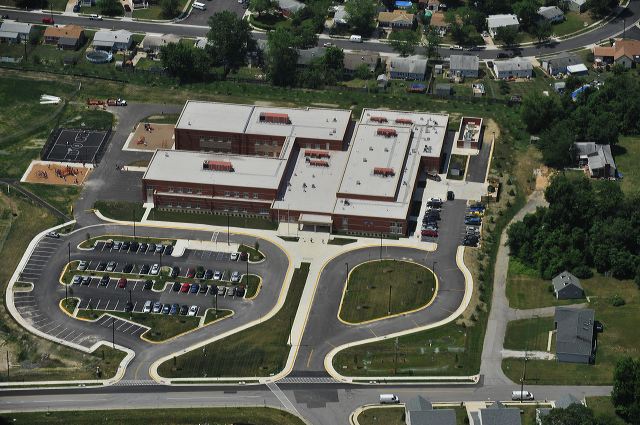Freetown Elementary School
Glen Burnie, MD
Matthew Buda
Mechanical Option

Freetown Elementary School Glen Burnie, MD Matthew Buda Mechanical Option |
 |
|---|
Thesis Proposal |
||
Depth Ground Source Heat Pump with thermal storage: In order to take advantage of the earth’s constant temperature, a ground source heat pump will be researched and modeled to look at advantages and disadvantages of installation. Install CO2 Occupancy Sensors: This study will install occupancy sensors to control the ventilation as well as lighting within a space. These sensors will have an effect on the amount of outdoor air and amount of return air that could be used. Four Pipe System: Currently, Freetown Elementary School is a two pipe system that needs to be switched over from heating to cooling or from cooling to heating. One pipe is dedicated to supply and one pipe is dedicated to return depending if the spaces are calling for heating or cooling. A four pipe system will be researched and modeled to determine the advantages and disadvantages of the system Breadths Architecture
Changes to Original Proposal: A solar system will replace the four pipe system depth topic and the indoor environment quality sensors will replace the CO2 ventilation sensors. Breadth topics were changed to lighting/electrical and sustainability, refer to Breadth topics below for more details. Depth Solar System: A solar system will be added to the mechanical system in order to decrease energy use. A solar panel will be chosen and the number of panels will be determined based on the heating load of the building. An analysis of cost, savings, and payback will be done. The location of the solar panels will be modeled to show the altered view on the roof. Panel care and maintenance will also be analyzed to determine the life span of the solar panels. Indoor Environment Quality Sensors: This study will install indoor air quality sensors to control the ventilation within a space. These sensors will have an effect on the amount of outdoor air and amount of return air that could be used. If less people are in the space, less outdoor air would have to be brought in resulting in energy savings because of the reuse of return air that is already conditioned. An analysis will be made for cost and improvement on indoor air quality. Breadth Lighting/Electrical Sustainability
|
|
Other |
Note: While great efforts have been taken to provide accurate and complete information on the
pages of CPEP, please be aware that the information contained herewith is considered a work‐inprogress
for this thesis project. Modifications and changes related to the original building designs and
construction methodologies for this senior thesis project are solely the interpretation of Matthew Buda. Changes and discrepancies in no way imply that the original design contained errors or was
flawed. Differing assumptions, code references, requirements, and methodologies have been
incorporated into this thesis project; therefore, investigation results may vary from the original
design. |
This page was last updated on October 11, 2010, by Matthew Buda and is hosted by the AE Department © 2010. |